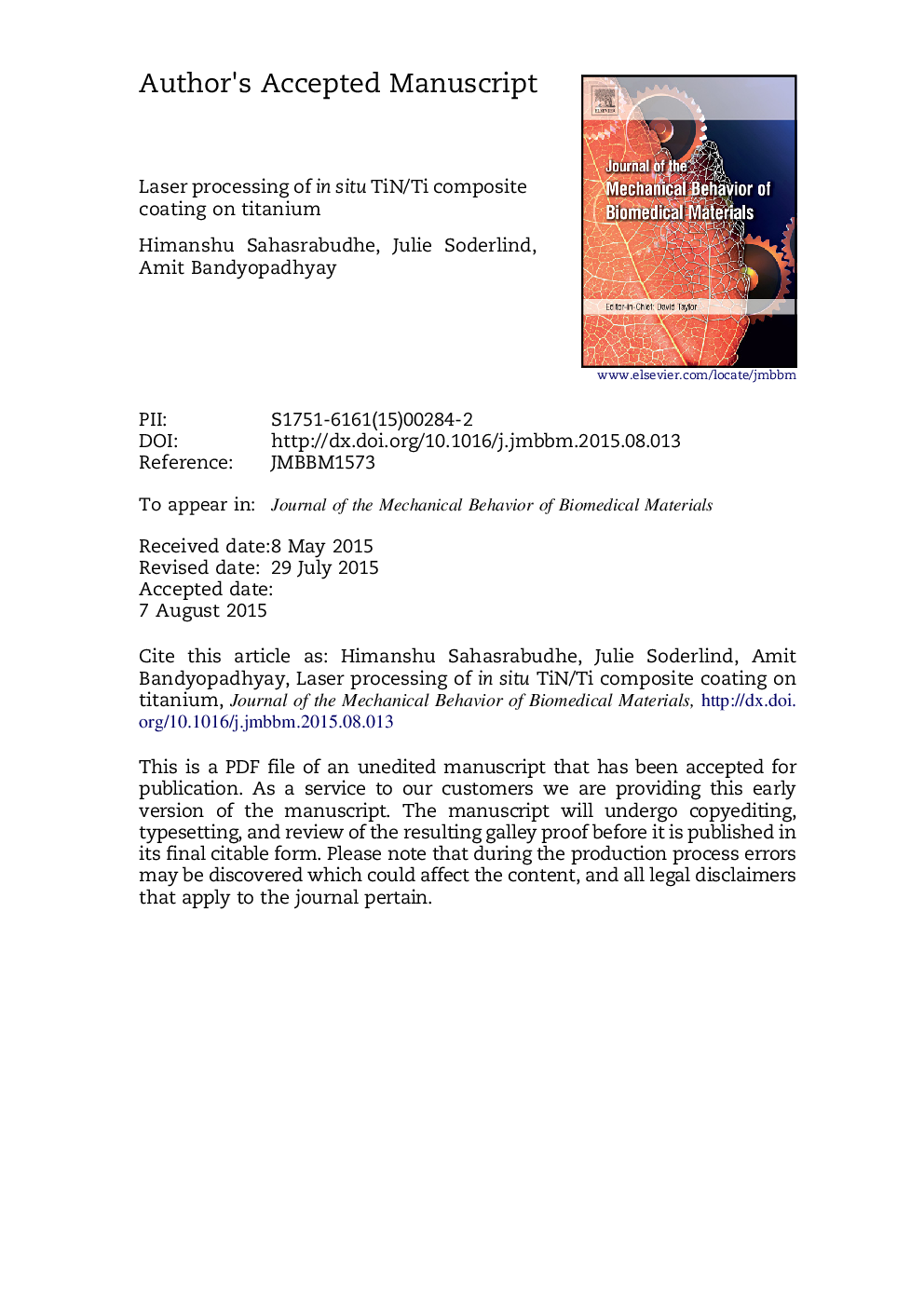| Article ID | Journal | Published Year | Pages | File Type |
|---|---|---|---|---|
| 7208334 | Journal of the Mechanical Behavior of Biomedical Materials | 2016 | 28 Pages |
Abstract
Laser remelting of commercially pure titanium (CP-Ti) surface was done in a nitrogen rich inert atmosphere to form in situ TiN/Ti composite coating. Laser surface remelting was performed at two different laser powers of 425 W and 475 W. At each power, samples were fabricated with one or two laser scans. The resultant material was a nitride rich in situ coating that was created on the surface. The cross sections revealed a graded microstructure. There was presence of nitride rich dendrites dispersed in α-Ti matrix at the uppermost region. The structure gradually changed with lesser dendrites and more heat affected α-Ti phase maintaining a smooth interface. With increasing laser power, the dendrites appeared to be larger in size. Samples with two laser scans showed discontinuous dendrites and more α-Ti phase as compared to the samples with one laser scan. The resultant composite of TiN along with Ti2N in α-Ti showed substantially higher hardness and wear resistance than the untreated CP-Ti substrate. Coefficient of friction was also found to reduce due to surface nitridation. Leaching of Ti4+ ions during wear test in DI water medium was found to reduce due to laser surface nitriding.
Related Topics
Physical Sciences and Engineering
Engineering
Biomedical Engineering
Authors
Himanshu Sahasrabudhe, Julie Soderlind, Amit Bandyopadhyay,
